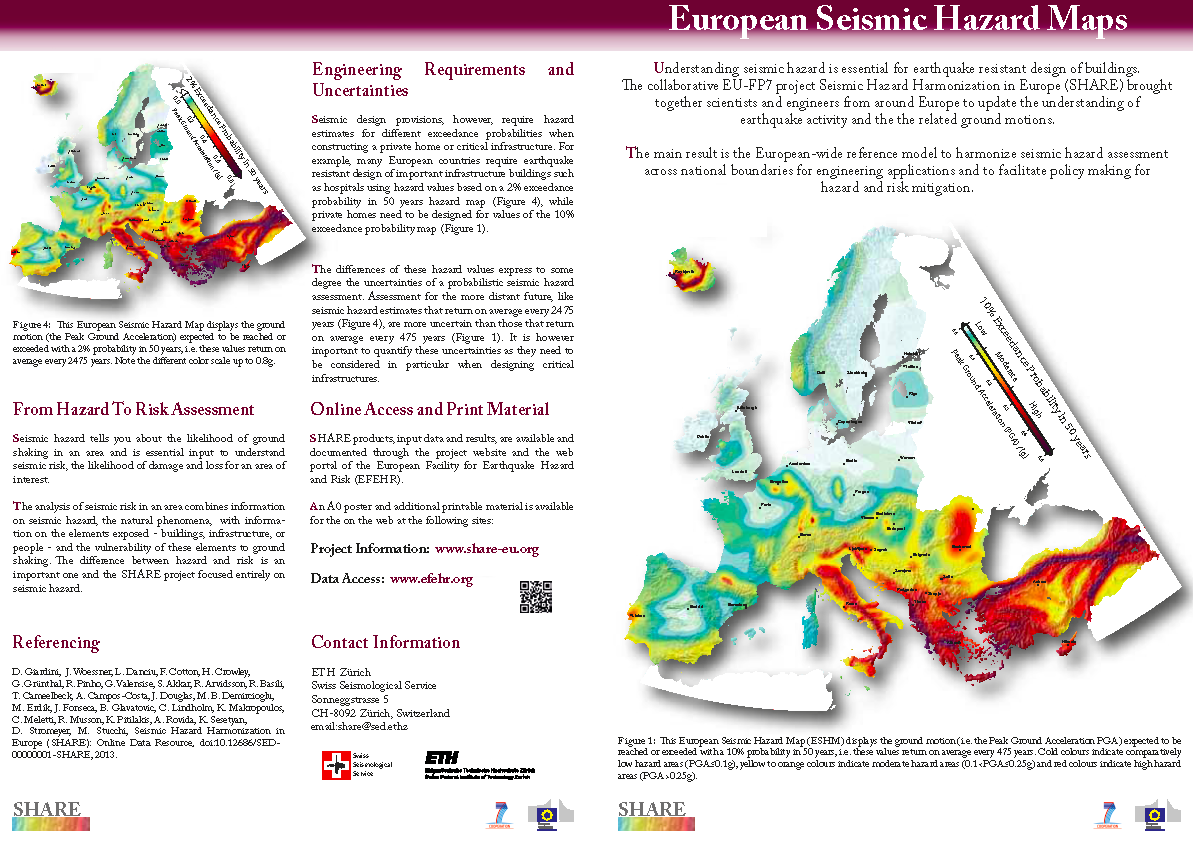Strong ground motion modelling
Several strong motion models have been published in the recent past, and each national hazard assessment project usually still uses its own preferred model or combination of models, or derives a model calibrated often on limited local data. SHARE will enable major progress in this area, delivering the first consensus model of ground motion attenuation on rock for the Euro-Mediterranean region, together with site corrections calibrated for regional applications.
Ground Motion Prediction Equation on rock
In the last 5 years, a few key European experts have made seminal contributions to a new understanding of strong ground motions (i.e., NGA), with a new focus on characterizing the site conditions at the recording stations, the rock site definition for Ground Motion Predictions Equations (GMPE) and the regional adjustments.
Contribution of SHARE: SHARE will produce the first consensus rock motion model for the European-Mediterranean region, based on a new pan-European compilation of well-calibrated strong- and weak-motion records, on the incorporation of well-calibrated waveforms from key earthquake databases from other region of the world (to complement the European data coverage in the near-field and high magnitude range), on the critical evaluation and selection of published models, and on the definition of a logic tree combining different model realizations and expert opinions. The approach used by SHARE to derive the model will be innovative in itself, as SHARE will bring together the best recognized experts in a single group and will charge them to critically analyze options and derive a model logic tree covering the Euro-Mediterranean region. We will also systematically evaluate regional effects (e.g., the Vrancea region, subduction zones around the Aegean Sea, oceanic crust in Portugal etc.)
Site effects
Eurocode 8 recommends a site classification based on the average S-wave velocity over the uppermost 30 meters (Vs30 below), and two families of spectral shapes depending on the seismic activity level of area (Type I for active areas, and Type II for moderately active areas). Leaving aside the issue of rock spectrum, the survey of national annexes describing the local, national implementations of EC8 indicates that there is no European consensus either on the criteria to be used for site classification – although a majority of countries has accepted Vs30, in the absence of any serious other proposition – or on the spectral shapes for the different site categories.
Contribution of SHARE: SHARE will achieve progress along two directions: (1) keeping the EC8 site classification criteria unchanged and proposing the corresponding "optimal" spectral shapes and/or amplification factors, and (2) exploring new tracks for new site classification, and proposing site amplification factors accordingly.
Alternative ground motion parameters
The increase of computational power and the development of numerical methods enable the direct use of acceleration time histories in the study of linear and nonlinear dynamic behaviour of structures.
time, recent observations have shown that empirical models do not capture ground motion specificities in some cases (near fault effects, 3D basin effects) and several numerical methods have then been developed to simulate time histories in such local and complex settings.
Contribution of SHARE:
- SHARE will provide the earthquake engineering community with new methods to obtain observed reference time histories specific to EC8 soil classes and European crustal conditions.
- We will develop new methodologies to include seismological simulations within PSHA studies, to help ensure the coherency between region specific simulations and PSHA maps derived at a European scale within this project. Some specifies areas (e.g., Wallis, Grenoble basin) will be chosen in order to test and validate these new ideas.


